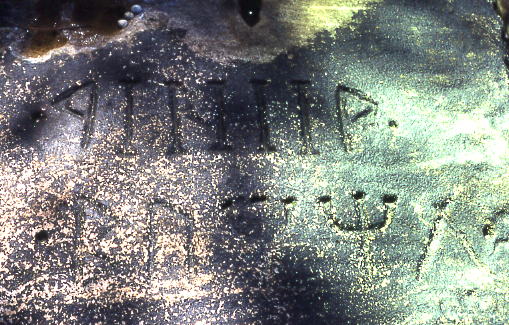|
Private Use Area
In Unicode, a Private Use Area (PUA) is a range of code points that, by definition, will not be assigned characters by the Unicode Consortium. Three private use areas are defined: one in the Basic Multilingual Plane (), and one each in, and nearly covering, planes 15 and 16 (, ). The code points in these areas cannot be considered as standardized characters in Unicode itself. They are intentionally left undefined so that third parties may define their own characters without conflicting with Unicode Consortium assignments. Under the Unicode Stability Policy, the Private Use Areas will remain allocated for that purpose in all future Unicode versions. Assignments to Private Use Area characters need not be private in the sense of strictly internal to an organisation; a number of assignment schemes have been published by several organisations. Such publication may include a font that supports the definition (showing the glyphs), and software making use of the private-use characters (e ... [...More Info...] [...Related Items...] OR: [Wikipedia] [Google] [Baidu] |
Unicode
Unicode, formally The Unicode Standard,The formal version reference is is an information technology Technical standard, standard for the consistent character encoding, encoding, representation, and handling of Character (computing), text expressed in most of the world's writing systems. The standard, which is maintained by the Unicode Consortium, defines as of the current version (15.0) 149,186 characters covering 161 modern and historic script (Unicode), scripts, as well as symbols, emoji (including in colors), and non-visual control and formatting codes. Unicode's success at unifying character sets has led to its widespread and predominant use in the internationalization and localization of computer software. The standard has been implemented in many recent technologies, including modern operating systems, XML, and most modern programming languages. The Unicode character repertoire is synchronized with Universal Coded Character Set, ISO/IEC 10646, each being code-for-code id ... [...More Info...] [...Related Items...] OR: [Wikipedia] [Google] [Baidu] |
Cirth
The Cirth (, meaning "runes"; sg. certh ) is a semi‑artificial script, based on real‑life runic alphabets, one of Tolkien's scripts, several scripts invented by J. R. R. Tolkien for the constructed languages he devised and used in his works. ''Cirth'' is written with a capital letter when referring to the writing system; the letters themselves can be called ''cirth''. In the fictional history of Middle-earth, the original ''Certhas'' was created by the Sindar (or Grey Elves) for their language, Sindarin. Its extension and elaboration was known as the ''Angerthas Daeron'', as it was attributed to the Sinda Daeron, despite the fact that it was most probably arranged by the Noldor in order to represent the sounds of other languages like Quenya and Telerin. Although it was later largely replaced by the Tengwar, the Cirth was nonetheless adopted by the Dwarf (Middle-earth), Dwarves to write down both their Khuzdul language (''Angerthas Moria'') and the languages of Man (Middle ... [...More Info...] [...Related Items...] OR: [Wikipedia] [Google] [Baidu] |

